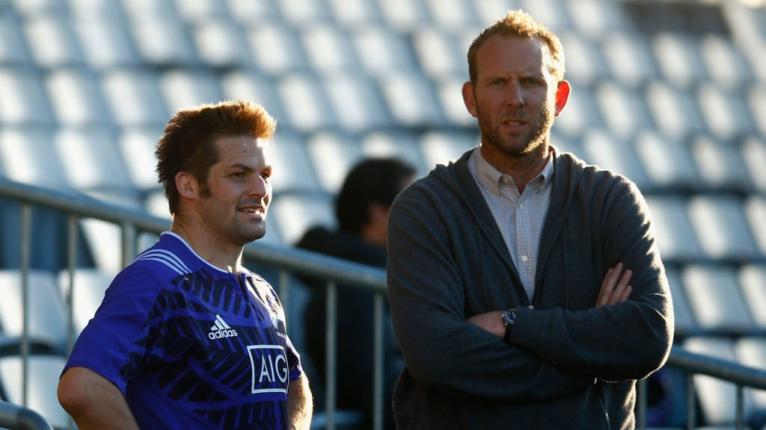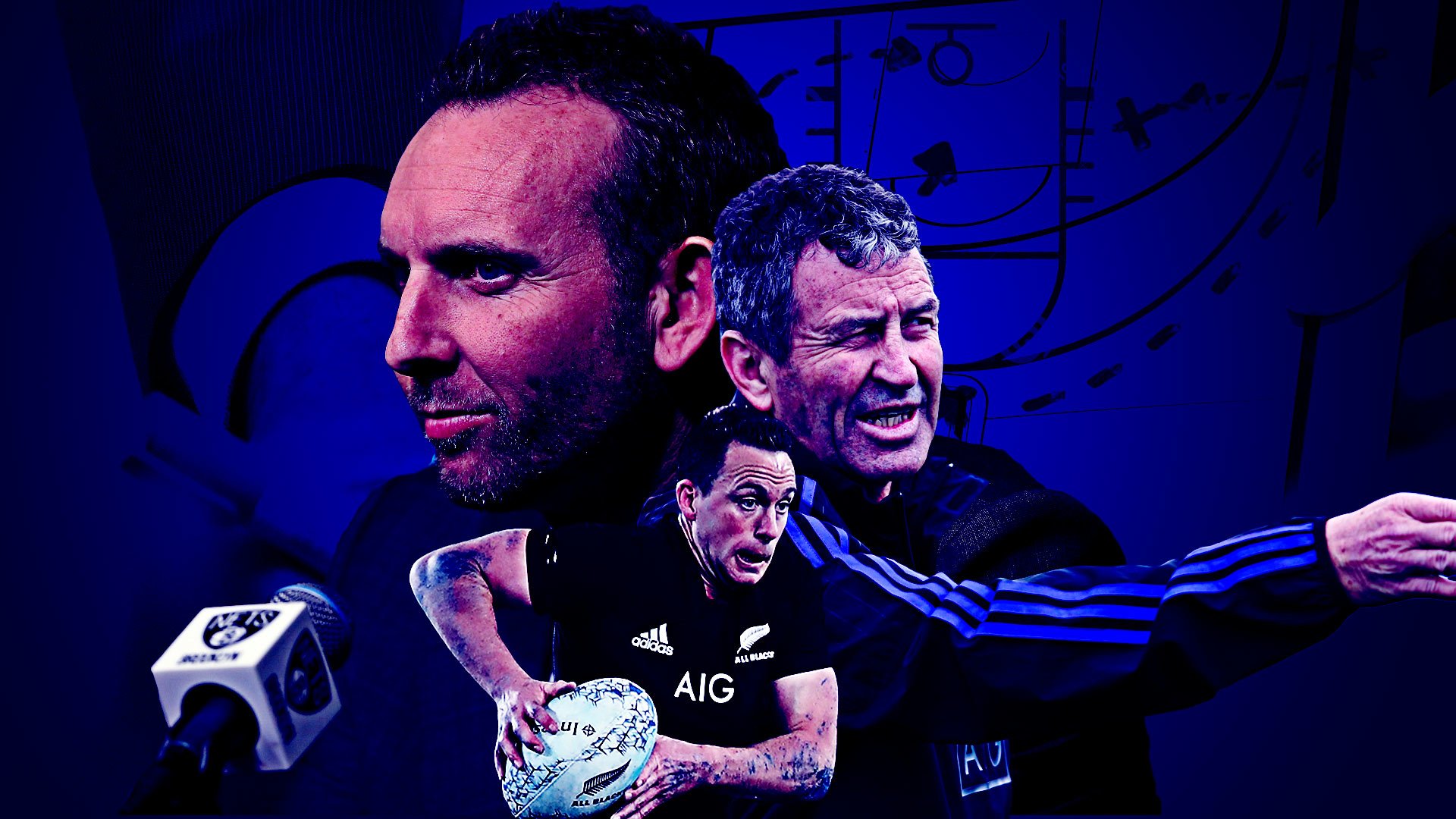How an NBA GM inspired the All Blacks lethal counter attack

Could legendary NBA coach Gregg Popovich have helped influence the All Blacks‘ counter strategy? What the San Antonio Spurs taught the All Blacks that revolutionised transition plays.
Australian journalist Bret Harris of The Guardian credits coach John Mitchell as the ‘godfather’ of the counter-attack philosophies employed by the All Blacks in the early 2000’s.
“As a basketballer, Mitchell understood the importance of transition, when the ball changes hands from one team to the other, which has become the foundation of the modern All Blacks’ style of play,” he wrote.
Whether Mitchell was indeed the first pioneer is unknown, but the philosophy has evolved as others like Wayne Smith built on the original concept.
As counter attack rose in production – around 45 percent of All Blacks tries are made from opposition ball – so did the importance of counter-attack systems. If nearly half of your tries come from opposition ball, why would you not have detailed plans around it and train for it?
Organised plans around counter-attack crystallised around Mitchell’s era, and the prominence of attacking from turnover ball became a central part of the All Blacks game that others failed to recognise the importance of.
The reasoning behind it is sound – transition plays are brief periods of instability within a match that offer up ‘weakness’ as teams try to become stable again on both sides of the ball. The ‘race to stability’ can yield big results for the winner, especially if you have the ball.
The transitions became referred to as ‘click’ plays because the attacking window is open and closed just like that, as fast as a ‘click’ and fortunes can be realised in the window.
https://giphy.com/gifs/mXrKnozhzBFzl5Hw4E
The counter-attacking system evolved as the All Blacks borrowed more concepts from basketball, and it was a Kiwi connection that helped Smith get time with the San Antonio Spurs.
New Zealand-born Sean Marks, the first Kiwi player to make it to the NBA and currently General Manager of the Brooklyn Nets, was an assistant coach to legendary Gregg Popovich at the San Antonio Spurs at the time.
After a 13-year NBA career, Marks landed an assistant coaching gig with the five-time NBA champions, where he became Pop’s protégé. Popovich valued Marks so highly he would not have let him leave if he had his way.
Whilst Marks was at the Spurs, he met with Smith and taught him the ‘Motion Offence’ that they ran in transition, which would become the inspiration for the All Blacks counter-attacking framework.

The Motion Offence is a flexible system of attack that utilises player movement, floor spacing and a set of skills (passing, cutting and setting screens). The system gives the players the freedom to utilise the skills within the framework to maintain rapid ball movement until a defensive mismatch or lack of coverage can be taken advantage of.
The system is fluid, meaning play develops in a natural flow and cannot be replicated more than once. Each rendition is a natural creation born out of the players’ honed instincts and abilities, as they read and react to what’s in front of them. It can only be as good as the players’ skills within it.
The hardest part of defending it is the play isn’t pre-determined. It is dictated by what the defence tells you to do, not by what you want to do. And according to those who swear by it, the defence will always give you an option.
It was perfectly suited for the All Blacks, allowing the players to do what they do best and utilise their skills.
Smith took away these principles and applied them to rugby in an attempt to create a ‘blur’ on counter-attack much the same way as the Spurs motion offence uses movement to create opportunities.
Retreating players would stretch to sidelines much the same way shooters would spot up in the corners, to ensure the All Blacks can use the full width of the field in the same way the Spurs use the floor.
They adapted the Spurs movement principles – no player is stationary for more than two seconds, and the ball is moved in under half a second. These were mirrored by the All Blacks 10-second rule – every player is working as hard as they can for the first 10 seconds, and doing the obvious quickly – which meant passing if you had a defender in front of you.
They would train it, so the players could learn visual cues from each other, becoming meshed as a greater sum of parts. The practice and repetition makes the system become second nature when the players know what each teammate likes to do and when they like to do it.
The most telling feature – it requires at least 14 men on their feet to execute, meaning forwards are involved as well. This creates excitement for all players involved, adding an enjoyment factor for forwards not necessarily present in other facets of the game.
This system has been in play for at least five years, possibly evolving into something more. The more experience retained in the All Blacks setup, the more dangerous it is. The system will always be as productive as the skills of the guys running it.
Michael Cheika wants more urgency in defence to shut it down.
Perhaps this is looking at the situation the wrong way. The All Blacks counter success isn’t down to the Wallabies defensive ability, it’s because their skill level in attack is so high – which is not going to get worse. Every side is vulnerable in transition to varying degrees, including the All Blacks themselves. They conceded an 80-metre try to Jack Maddocks in the first test in the same situation. Another try was also nearly created when Will Genia pounced on a loose ball own his five in a long break that ended when reserve hooker Tolu Latu threw a forward pass.
The answer might lie in attack, with better ball skills to limit the turnovers in the first place or implementing similar tactics when you have the same opportunities, which could level out the net effect of turnover ball.
Both teams will get a similar number of turnover opportunities – it’s what you do with it that counts and the Wallabies haven’t figured out how to best utilise theirs.





























